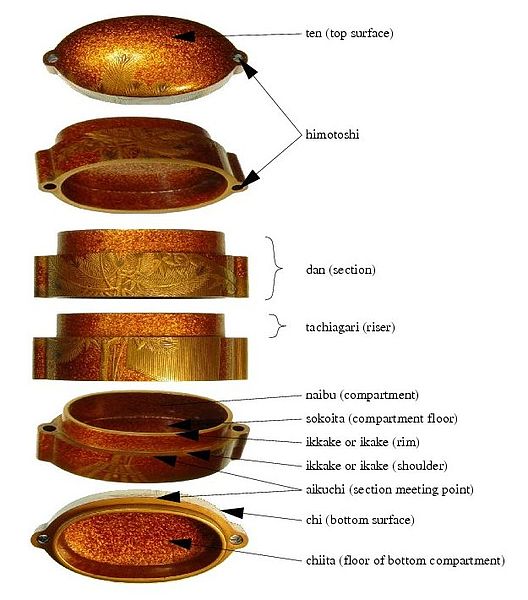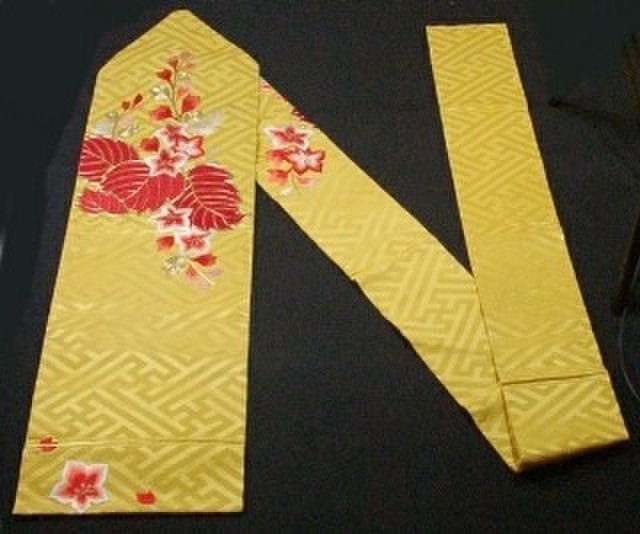An inro is a traditional Japanese case for holding small objects, suspended from the obi (sash) worn around the waist when wearing a kimono. They are often highly decorated with various materials such as lacquer and various techniques such as maki-e, and are more decorative than other Japanese lacquerware.
Inro with the characters for longevity and good fortune and the "Seven Lucky Treasures" on checkerboard ground, Edo period, 18th century, Metropolitan Museum of Art
Inro components
An inro suspended by a netsuke and held together with an ojime
Inro cabinet with a waterfall design in maki-e lacquer, Edo or Meiji period, 19th century
An obi is a belt of varying size and shape worn with both traditional Japanese clothing and uniforms for Japanese martial arts styles. Originating as a simple thin belt in Heian period Japan, the obi developed over time into a belt with a number of different varieties, with a number of different sizes and proportions, lengths, and methods of tying. The obi, which once did not differ significantly in appearance between men and women, also developed into a greater variety of styles for women than for men.
Back of a woman wearing a kimono with the obi tied in the tateya musubi style
A Japanese woman tying the obi of a geisha in the 1890s.
The nagoya obi, the most common variety of women's obi
The separate bow part of a tsuke obi is attached using a wire hook.








